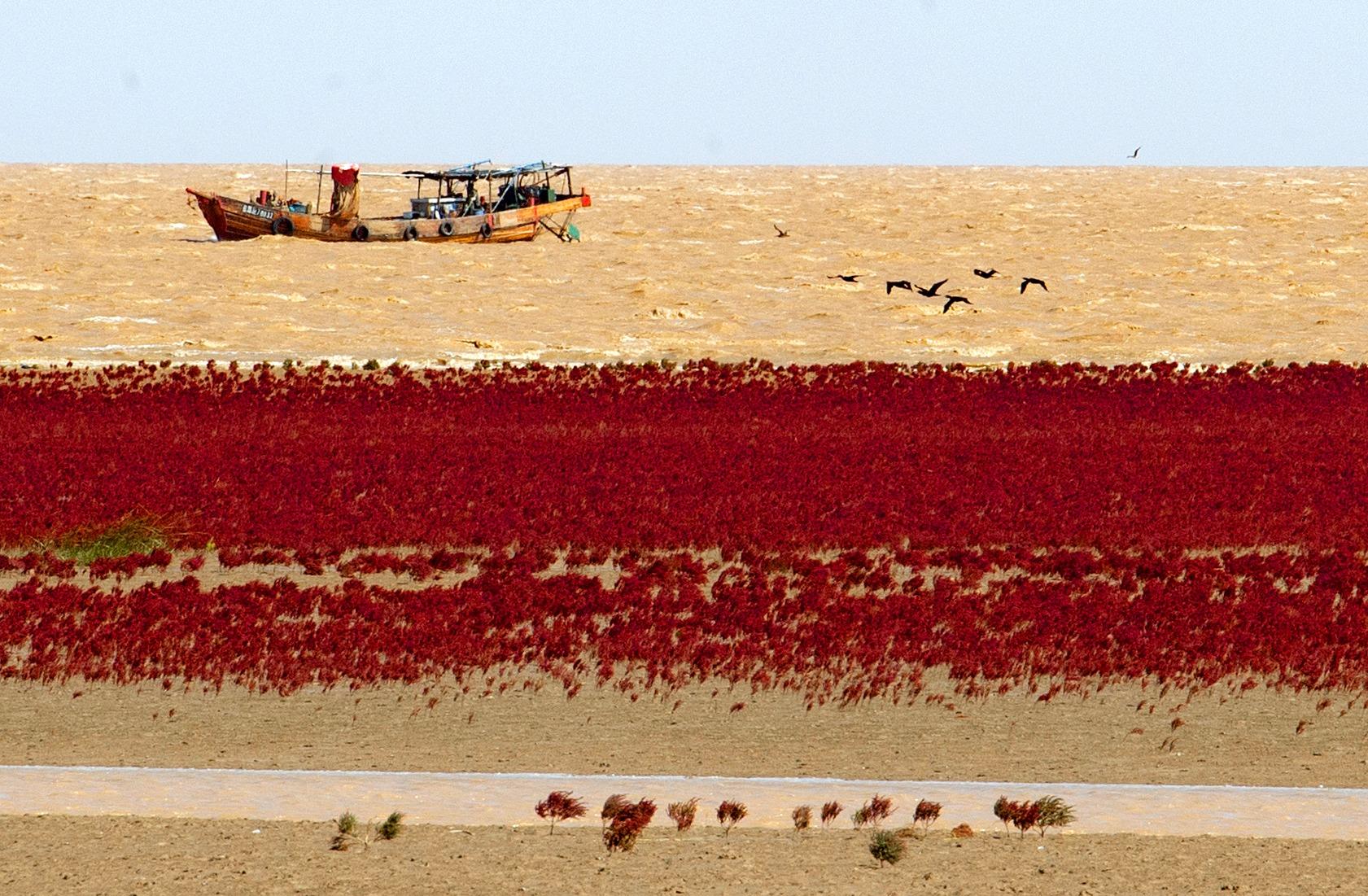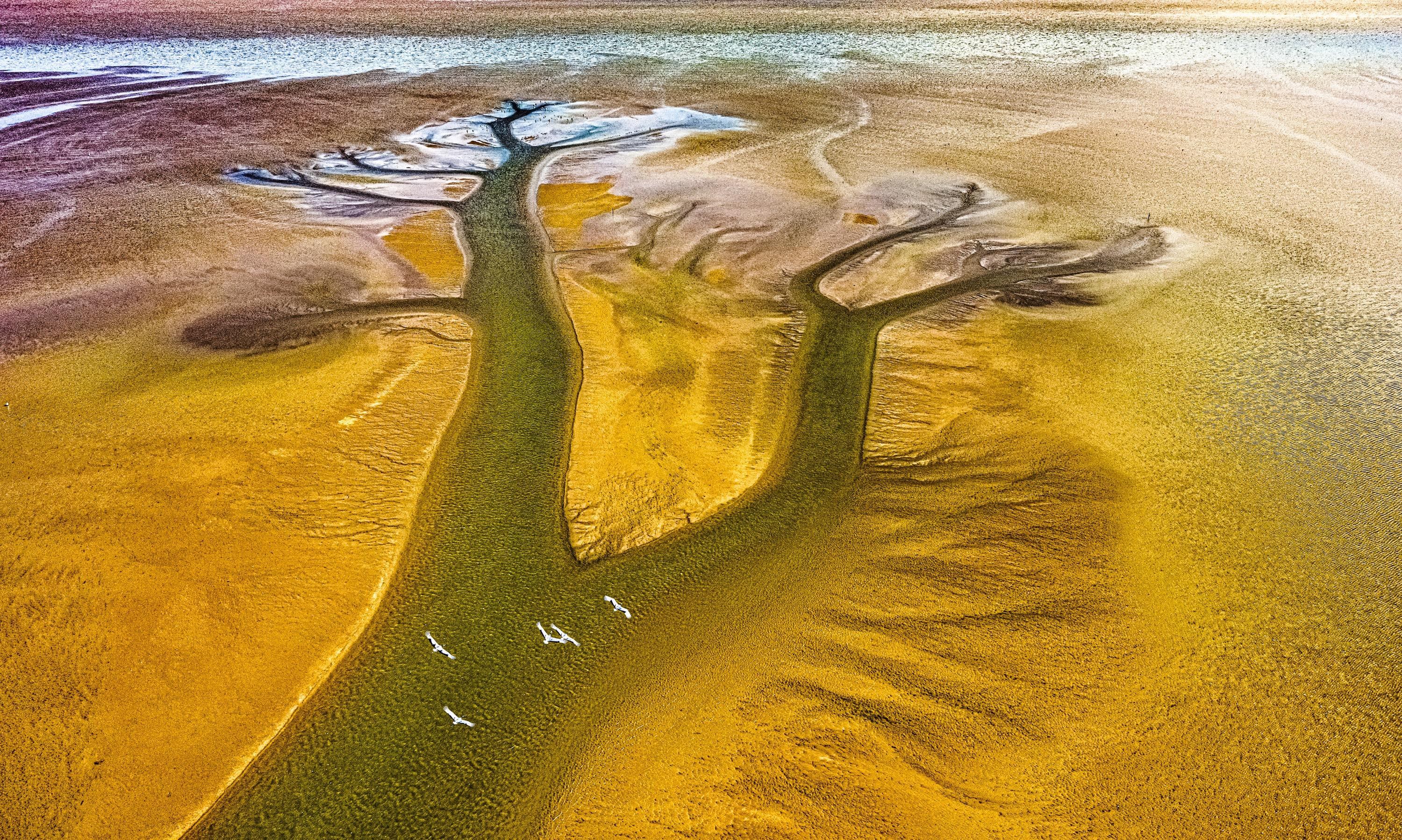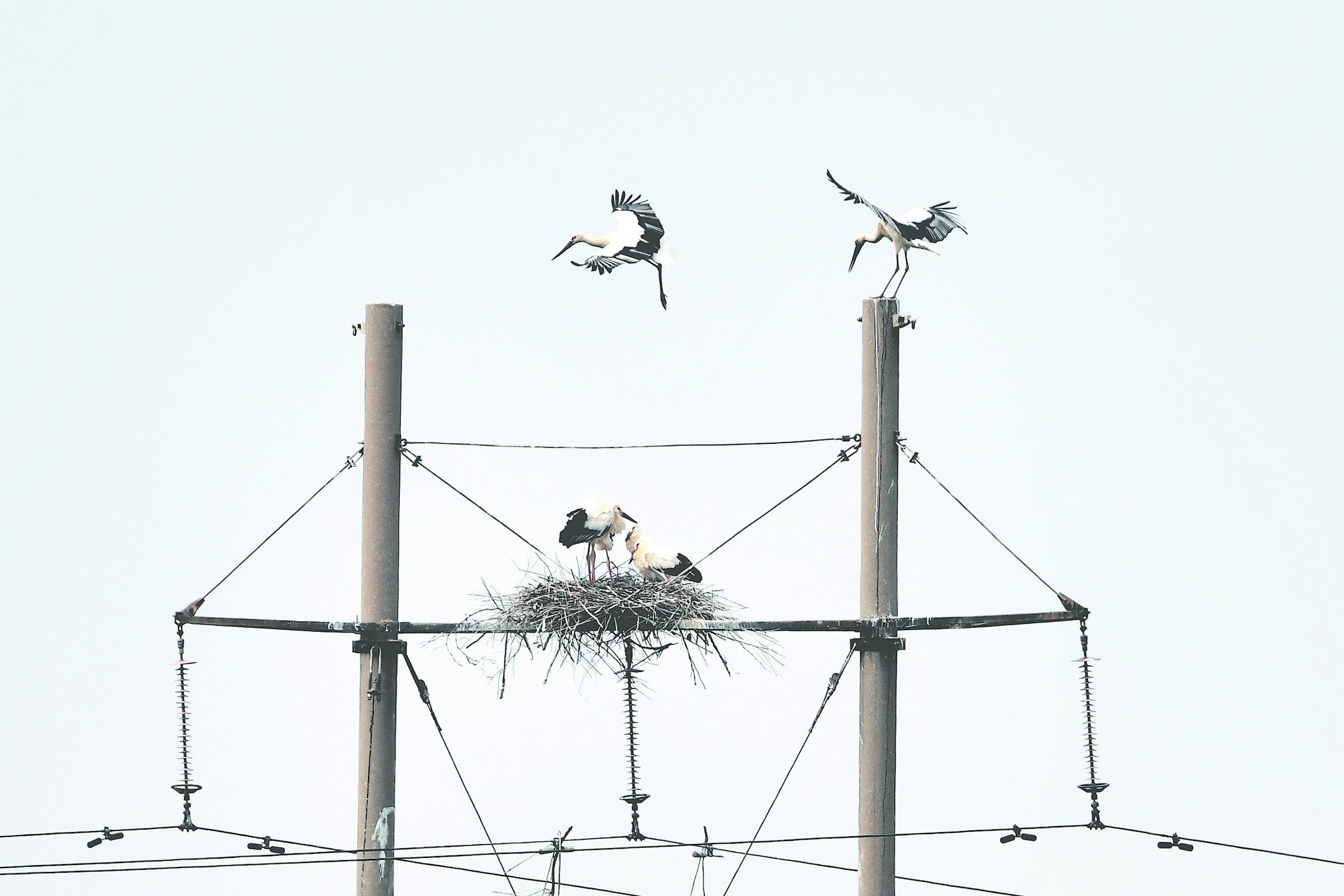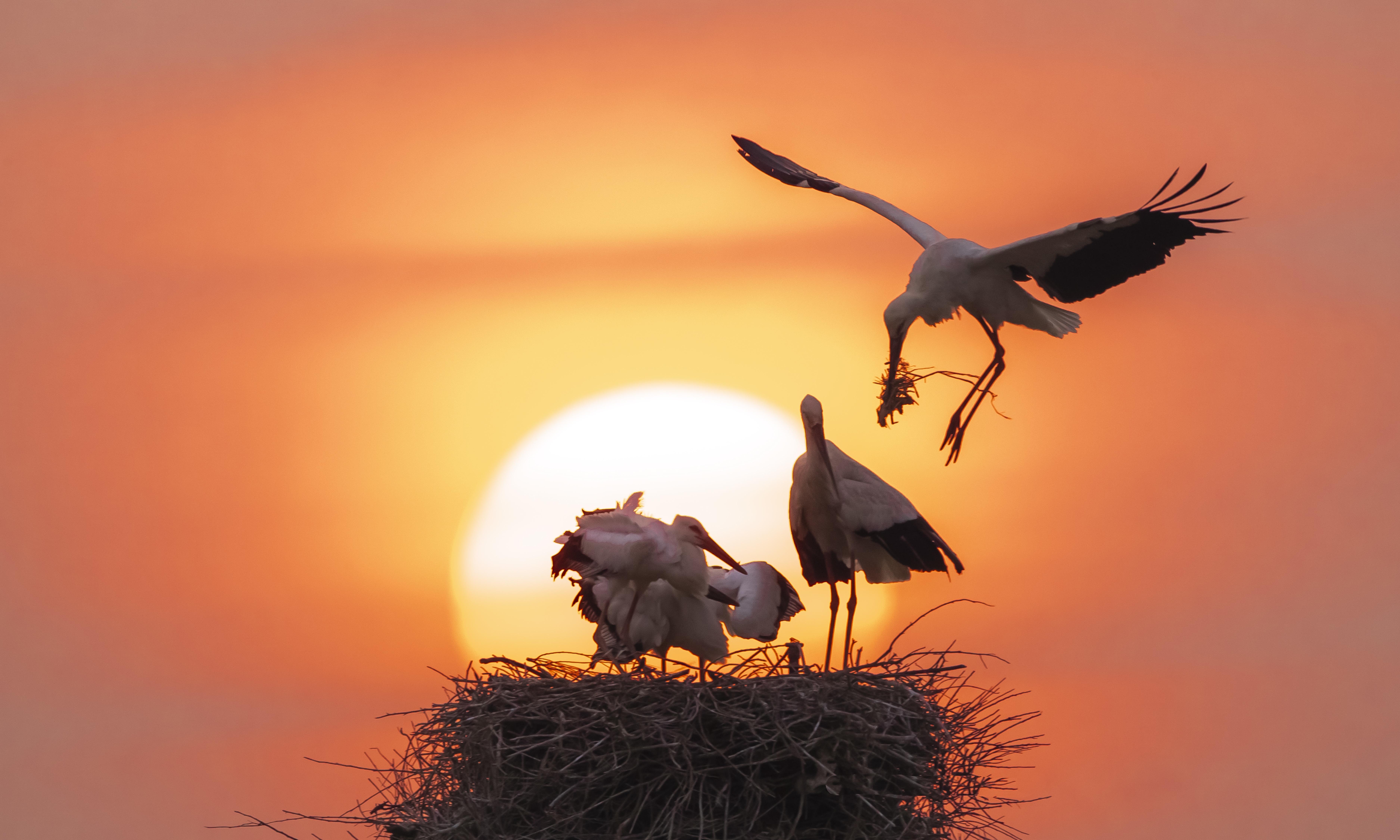Water replenishment and conservation efforts paying off
 The number of avian species in the Yellow River Delta has risen to 373. (PHOTO PROVIDED TO CHINA DAILY)
The number of avian species in the Yellow River Delta has risen to 373. (PHOTO PROVIDED TO CHINA DAILY)
As a chilly spring breeze lightly brushed his tanned face, Wang Lidong walked around the Yellow River Delta National Nature Reserve in Dongying, Shandong province.
The environment in the (Yellow River) delta provides good living conditions for the birds.
Shan Kai, senior engineer at Yellow River Delta National Nature Reserve in Dongying, Shandong province
He checked water conservation projects and also the water level in the wetlands — part of a day's work for Wang, who has been involved with protecting the reserve for three decades.
"The environment at the reserve has significantly improved over the years. It is now home to many birds, so all the hard work has been worthwhile," said Wang, an engineer working on the wetland restoration project at the reserve, which is situated on a large expanse of wetlands in the Yellow River Delta.
The river, China's second longest, zigzags its way through a plateau blanketed with fine soil. It carries millions of metric tons of soil east every year, some of it reaching the estuary, where the waterway flows into the Bohai Sea in Dongying, forming the wetlands.
President Xi Jinping has visited the nine provinces and autonomous regions along the river, and during his trips, he emphasized the importance of ecological conservation and the concept that "lucid waters and lush mountains are invaluable assets".
 The Yellow River Delta National Nature Reserve in Dongying, Shandong province, boasts rich wetland systems. (PHOTO PROVIDED TO CHINA DAILY)
The Yellow River Delta National Nature Reserve in Dongying, Shandong province, boasts rich wetland systems. (PHOTO PROVIDED TO CHINA DAILY)
In October 2021, Xi inspected the Yellow River estuary, including the reserve in Dongying. He checked the waterway's tributaries, the wetlands' environment and learned about ecological protection and high-quality development in the Yellow River Basin.
"The Yellow River is our mother river, and conservation is the precondition. We must make unremitting efforts to protect it," Xi said during an inspection visit to the estuary.
The estuary wetlands, typical of those found elsewhere in the world, include lakes, swamps and tidal flats.
In following Xi's concept of ecological civilization, Wang said the work carried out in Dongying has focused mainly on protecting and restoring the wetlands, and acts as a model for the harmonious coexistence of humans and nature.
In recent years, the city has invested 1.36 billion yuan ($196.7 million) to support 17 wetland protection and restoration projects in the delta, including water supplements, cordgrass treatment, and offshore biodiversity conservation, which has helped strengthen the city's wetland ecosystem.
 The Yellow River Delta National Nature Reserve in Dongying, Shandong province, boasts rich wetland systems. (PHOTO PROVIDED TO CHINA DAILY)
The Yellow River Delta National Nature Reserve in Dongying, Shandong province, boasts rich wetland systems. (PHOTO PROVIDED TO CHINA DAILY)
Wetlands conservation
At the reserve, a large expanse of water stretches out into the distance. Reeds wave in the wind along both sides of a wooden walkway. Aerial views show a series of connected waterways, which resemble extremely slender veins.
Back in the 1980s and '90s, coastal erosion, seawater encroachment and drought caused the wetlands to shrink. Wang said the delta's rich wetland ecosystems are also seriously threatened by oil production, industrial waste pollution and land reclamation.
The reserve, established in October 1992 to protect the wetlands, covers about 1,530 square kilometers, with the wetlands comprising most of this area.
"As water is crucial to maintaining the healthy ecological system in the wetlands, we have been replenishing water at the site," Wang said. He added that the abundance of water in the wetlands will significantly prevent destruction of the ecological system from the encroachment of seawater.
In the past three years, more than 480 million cubic meters of water from the Yellow River have been replenished at the reserve. Data from the reserve's management committee show that this work has effectively alleviated soil salinization in the wetlands.
"We have built channels and sluices to ensure that water is replenished when needed at the wetlands," Wang said.
 The Yellow River Delta National Nature Reserve in Dongying, Shandong province, boasts rich wetland systems. (PHOTO PROVIDED TO CHINA DAILY)
The Yellow River Delta National Nature Reserve in Dongying, Shandong province, boasts rich wetland systems. (PHOTO PROVIDED TO CHINA DAILY)
The reserve management committee divided the wetlands into 49 areas based on the growth conditions for animals and plants, ensuring that each area receives the correct amount of water from the Yellow River.
Nurtured by the waterway, the animals and plants are thriving, Wang said.
The Yellow River Law, which took effect last month, regulates water use along the river, to which more water resources will be added to supplement the wetlands, he added.
Work is being carried out in Dongying to restore seagrass beds and native plants growing along waterways in the wetlands, such as Suaeda salsa, a type of herb.
Teaming up with the Chinese Academy of Sciences' Yantai Institute of Coastal Zone Research, the local government has created an effective way to eradicate Spartina alterniflora, a type of marsh cordgrass found on the estuary coastline that is seriously threatening the habitats of numerous species.
"We cut the grass down before plowing and flooding the area to prevent it returning," Wang said.
Spartina alterniflora found on more than 8,730 hectares of land has been eradicated in past years, resulting in 76 kilometers of blocked tidal channels being cleared, the management committee's data show.
Wang said, "Cleaning the Spartina alterniflora has provided natural growth conditions for native biological species."
 The Yellow River Delta National Nature Reserve in Dongying, Shandong province, boasts rich wetland systems. (PHOTO PROVIDED TO CHINA DAILY)
The Yellow River Delta National Nature Reserve in Dongying, Shandong province, boasts rich wetland systems. (PHOTO PROVIDED TO CHINA DAILY)
Home to birds
Late last month, groups of birds were seen resting on ponds on both sides of a road leading to the reserve. Some birds skimmed across the water surface.
Shan Kai, a senior engineer at the reserve, said, "The environment in the delta provides good living conditions for the birds."
Statistics show that the number of avian species in the delta has risen from 187 in the years after the reserve was established to 373.
Last year, 470 chicks were born to Oriental storks at the reserve, while 315 red-crowned cranes were observed wintering at the wetlands.
"To create a good environment for the birds, we built some small islands on waterways where the Yellow River flows through the wetlands," Shan said, adding that thanks to these efforts, the delta has become a well-known home to Oriental storks and Saunders's gulls.
The city is now working to build a Yellow River Estuary National Park to better preserve wetlands and biodiversity in the Yellow River Delta.
In November, Xi addressed the 14th Meeting of the Conference of the Contracting Parties to the Ramsar Convention, or COP14, in Wuhan, Hubei province, via video link.
He said it is important to build global consensus on valuing wetlands, respecting nature, minimizing disruption and damage to wetlands caused by human activity, and protecting the ecological security of wetlands for future generations.
It was announced at the convention that the Yellow River Estuary National Park would be designated as a national park. An area of 3,518 square kilometers in three Dongying counties has been allocated for the venue.
Thousands of hectares of farmland at the reserve have been returned to wetlands and beaches to prepare for the park, Wang said.
After it is established, the park is expected to become the first in China to integrate sea and land resources.
Contact the writers at zhaoruixue@chinadaily.com.cn


